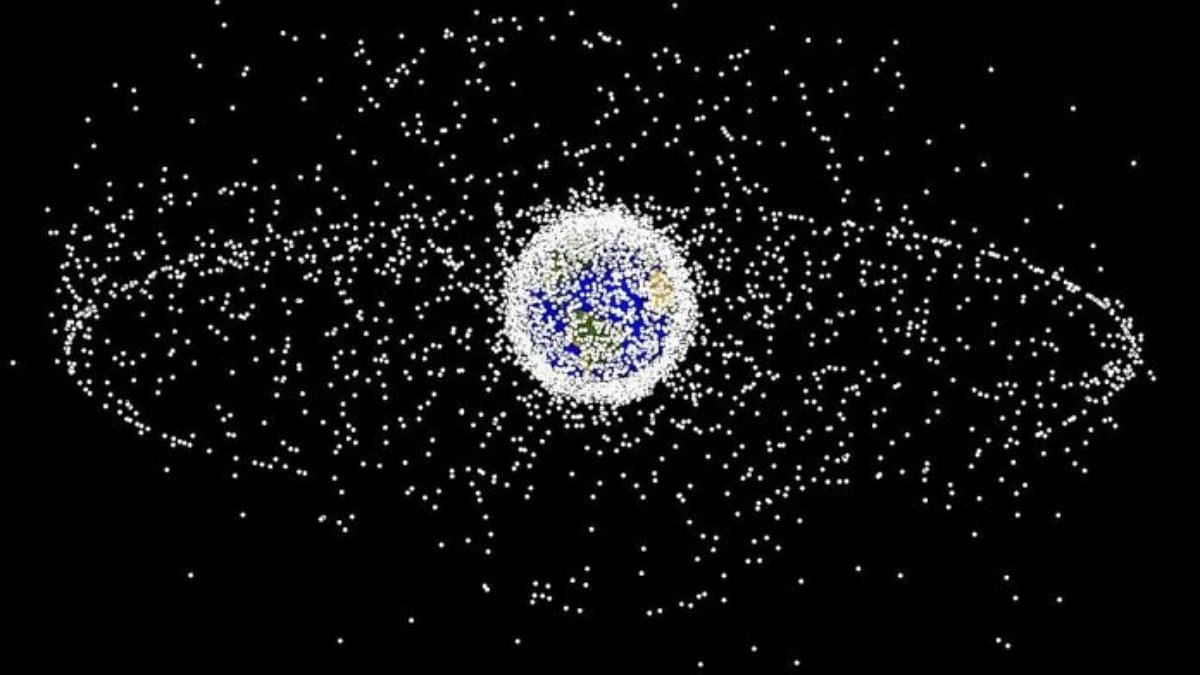New Delhi: The world added a total of 3,143 objects to space in 2023, a 24 percent rise from the previous year when the number stood at 2,533. The Indian Space Research Organisation (ISRO) performed 25 collision-avoidance manoeuvres (CAM) in space last year — these were some of the details ISRO released in a report last week on how it manages its satellites and space assets in the backdrop of rising space debris.
Notably, according to an ISRO graph, in 13 years, the number of CAMs has increased to 25 in 2023 from one in 2010 — a rising trend attributed to “growing congestion in outer space”.
In light of the growing concerns regarding space debris, ISRO’s chairman S. Somanath, during an Inter-Agency Debris Coordination Committee (IADC) meeting in Bengaluru on 16 April, announced that India planned to have debris-free space missions by 2030 — by both government and non-governmental organisations — to reduce space pollution.
In its report released on 26 April titled ‘The Indian Space Situational Assessment Report (ISSAR) for 2023’, ISRO highlighted the surge in space missions and the corresponding increase in space objects, a consequence of the expanding reach of space technology.
It also showed how the ISRO System for Safe and Sustainable Space Operations Management (IS4OM) team, founded in 2022, works to manoeuvre and protect India’s space assets from potential collisions.
According to the report, 25 collision-avoidance manoeuvres were performed by the organisation this year, based on a total of 3,033 close-approach alerts (within 1km) detected by ISRO.
Notably, 23 of the 25 CAMs that ISRO undertook were for its satellites in both the Low-Earth orbit and Geo-synchronous Earth orbit, while two were specific to the Chandrayaan-3 mission to avert collisions with NASA’s Lunar Reconnaissance Orbiter and Korea Aerospace Research Institute’s (KARI) Korea Pathfinder Lunar Orbiter, the report highlighted.
It also revealed that to prevent collisions, the Chandrayaan-3 launch was postponed by 4 seconds, and other missions, such as TeLEOS-2 and DS-SAR, were delayed by 1 minute each.
Collaborating with United States Space Command (USSPACECOM), ISRO received 1.38 lakh (1,37,565) close-approach alerts for Indian satellites. After conducting its analysis, ISRO determined whether CAMs were necessary and found that none of the close approaches were critical enough to warrant a collision avoidance manoeuvre.
On certain occasions, coordination with international agencies, like SpaceX and Europe’s satellite agency, EUMETSAT, was also carried out to avoid close approaches with their satellites. These close-approach alerts encompass not only satellite collisions but also natural space hazards, such as asteroids, meteoroids, and comets.
Also Read: ISRO to carry out test to validate safety of crew module for Gaganyaan mission by 30 April
Atmospheric re-entry of space objects
For the long-term sustainability of outer space missions, ISRO and other international organisations attempt to facilitate the re-entry of objects, rockets and decommissioned space missions into the atmosphere. This process is critical for mitigating space debris.
As these objects descend through Earth’s atmosphere, they are subjected to intense friction, heating up due to collisions of their surfaces with air molecules at high speed. Most objects, thus, heat up and burn away, either partially or completely, depending on their size.
On 7 March 2023, one of the biggest atmospheric re-entry missions was when ISRO controlled the Megha-tropiques-1 to safely land in the South Pacific Ocean. The Megha-tropiques-1 was launched in 2011 to study climate and weather patterns, and a total of 20 manoeuvres were required after its decommissioning to bring it back to Earth.
For other space objects like the PSLV-C56 upper stage, which is responsible for placing the payloads and satellites of a mission into their final orbits, ISRO opted for de-orbiting to avert its transformation into orbital debris. However, subjected to atmospheric drag, it naturally re-entered and disintegrated within a month.
In situations where the space objects and parts of a launch mission could not be de-orbited or brought back to Earth, ISRO ensured that they were placed in an orbit with a “relatively sparse populations” to not crowd the other orbits and interfere with existing missions.
Take the 2009 Oceansat-2 mission, for instance. Due to its age and resulting limitations, ISRO couldn’t execute a de-orbiting manoeuvre. Therefore, after the mission, the satellite was disposed of in an orbit that was at a 900-km altitude above the Earth’s surface.
ISRO is party to a number of international treaties that deal with sustainability in space, and best practices for dealing with space debris. It’s a member of the Inter-Agency Debris Coordination Committee (IADC), the International Academy of Astronautics’ space debris group, and the International Organization for Standardization (ISO) space debris working group.
In 2024, ISRO chaired the 42nd IADC meeting in Bengaluru on 16 April.
(Edited by Richa Mishra)
Also Read: Special parachutes, cramped capsule — how Gaganyaan will take 3 astronauts to space & bring them back

